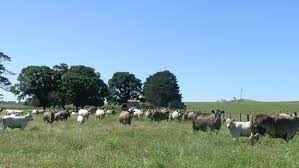Pastoral & Farming Communities - Early Iron Phase
Pastoral and farming communities have been an integral part of Indian society since prehistoric times. These communities have traditionally lived in close association with nature and relied on agricultural and animal husbandry practices for their livelihoods.
Geographically, pastoral and farming communities are distributed across India, with different regions having their own unique characteristics. In northern India, the fertile plains of the Ganges and Yamuna rivers have supported agriculture for thousands of years. Here, wheat, rice, and other crops are grown, and the region has been known for its rich cultural and artistic traditions.
In southern India, the Deccan plateau and the coastal regions have been known for their agricultural and pastoral practices. The region is characterized by rice cultivation, coconut farming, and the rearing of cattle, goats, and sheep. The region is also known for its unique cultural practices, such as the dance forms of Bharatanatyam and Kathakali.
In western India, the arid and semi-arid regions of Rajasthan and Gujarat have been home to pastoral communities for centuries. These communities rely on animal husbandry practices, such as rearing camels, cows, and sheep, and have developed unique cultural practices, such as folk music and dance.
In eastern India, the fertile plains of the Ganges-Brahmaputra delta have been known for their rice cultivation and fishing practices. The region is home to a diverse range of communities, including the Biharis, the Bengalis, and the Odiyas, each with their own unique cultural practices.
The characteristics of pastoral and farming communities vary depending on their geographical location and cultural traditions. However, some common characteristics include a deep connection to nature and the environment, a reliance on traditional agricultural and animal husbandry practices, and a strong sense of community and cultural identity.
In conclusion, pastoral and farming communities have played an important role in shaping Indian society and culture for thousands of years. The geographical distribution and characteristics of these communities vary, but they share a common bond through their connection to the land and their traditional practices.

Comments
Post a Comment